The Syrian Hamster: An Introduction
- Em

- May 8, 2020
- 4 min read
The Syrian hamster (Mesocricetus auratus), also known as the ‘golden hamster’, is the largest of the five domesticated species weighing anywhere from 100-300g, though average around 130g, and measure at a length of 13-18cm. The agouti (or ‘wild type’, pictured) variety have a short dark brown coat, white belly, with dark ears and black cheek flashes. However, they are available in a wide variety of colours, patterns, coat types in the pet trade: including colours like solid black, cream, and sable, patterns including banded and dominant spot, and coat types such as satin and long hair.

The natural coat colour of the Syrian hamster is golden in colour. Their favoured habitat consists of soil types ‘terra fusca’ and ‘terra rossa’. Terra fusca is a more brown colouration, whereas terra rossa is a burnt red – these are possible indications of why the wild type Syrian hamster are the colour they are.
While the exact range of the Syrian hamster is not defined, it is suggested that it may border the Syrian desert however, there is no evidence to suggest that they are found in true desert/steppe habitats as of the time I am writing this post & all observations suggest they overwhelmingly favour rich agricultural fields instead. While they are not desert dwellers like the Roborovski dwarf, an appropriately sized sand bath should still be offered to Syrian hamsters (minimum of 30cm x 20cm, or equal footprint). Dry dirt, which they would encounter in the wild on the surface, is dust, and they do have a natural instinct to roll in it to bathe – additionally, sand baths just provide an additional form of enrichment for all domesticated hamster species, and they appear to appreciate them. Providing digging pits (filled with coco fibre, peat moss, etc) may also be of an appreciation to Syrian hamsters based off their preference of habitat in the wild.
The Syrian hamster is most abundant in rich agricultural fields rather than barren steppes. Some studies have suggested that they are often found in ‘rocky steppes and bushy slopes’, but I have not found any indication of them preferencing a desert-like habitat. Indeed, even observations of them in steppe habitats are practically non-existent and it is suggested that observations of Syrian hamsters in true steppe habitat likely weren’t Syrian hamsters at all – but an entirely different hamster species (Turkish hamster).
Additional Scientific Literature on the Natural Habitat and Wild Observation of the Syrian Hamster:
Additional Factors to Consider When Setting Up The Enclosure:
Unlike the Phodopus species, the paws of the Syrian hamster are practically hairless in comparison. This allows them for better grip, and makes them less likely to slip on smooth surfaces than Phodopus. However, the tail of the Syrian hamster is short indicating they while they are more able climbers than Phodopus due to their paws, they are not necessarily a skilled climber nor do they have great balance or depth perception. Enrichment like the climbing tower attached is not appropriate for Syrian hamsters, not only due to issues with products made with this material, but because they are not skilled climbers: your hamster may be able to climb up, but they are awful at climbing down and many choose just to jump off instead. For more species appropriate enrichment, cork tunnels (stacked if you wish, to create more of an obstacle), can be provided instead. Because of their overall not-so-great climbing abilities/depth perception, care should be taken when providing enrichment in the enclosure, to ensure the hamster cannot climb to great heights. Generally speaking, your Syrian hamster should only be able to climb to a maximum of 30cm (12”). This is to ensure that should they fall, that they won’t be injured by doing so.

Social Behaviour of the Syrian Hamster:
Like many hamster species, the Syrian hamster is observed as being a total loner & living a solitary lifestyle in the wild, only observed together during the breeding season. In captivity, the Syrian must be housed solitary. Group housed Syrians is reckless, and often ends with the hamsters attacking and killing each other.
As a pet, the Syrian is typically an easy to tame hamster, with a more relaxed demeanour compared to the Roborovski. However this can vary amongst individuals, and is just generally speaking. Syrian hamsters are also frequently quoted as being easy beginner hamsters: I disagree entirely with this statement. Syrian hamsters – particularly females - are notoriously difficult to please in captivity and can very easily become restless with their desperation to escape their enclosure: this is reflective of them being unsatisfied with the space and/or enrichment they have been provided with, and the behaviour often requires a significant upgrade to correct/eliminate. While the minimum for Syrian hamsters in captivity is 775^2” with minimum 10” bedding depth, they are frequently not satisfied in enclosures less than 1,000 square inches with a 12-14” minimum bedding depth and even then they oftentimes require much larger enclosures with much deeper substrate. Due to the investment that would be required in terms of space & money for an appropriately sized, large enclosure, Syrian hamsters are suitable only for the very dedicated owner who is capable of upgrading their enclosure should it be required. For an average beginner, this is often not possible – but, if you are a dedicated beginner who is willing , then you may consider a Syrian hamster to be an option for you. If space is a concern, do not get a Syrian.

Click images to swipe through, pause, and read.








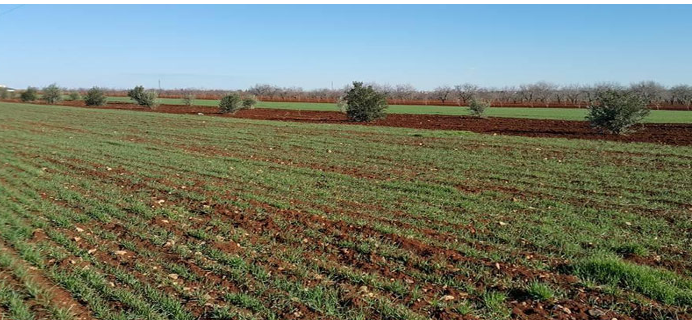

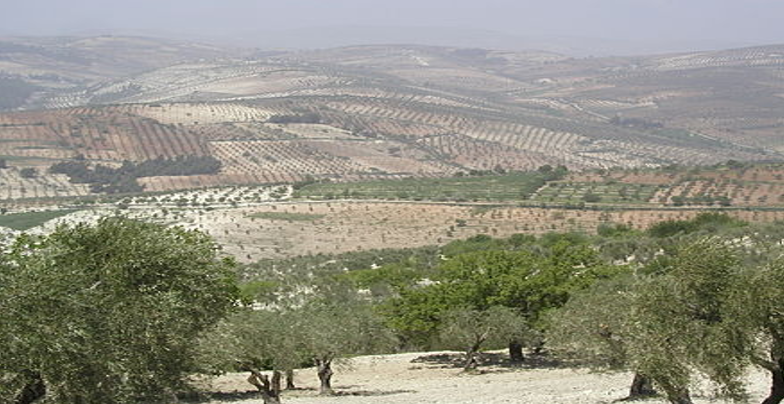

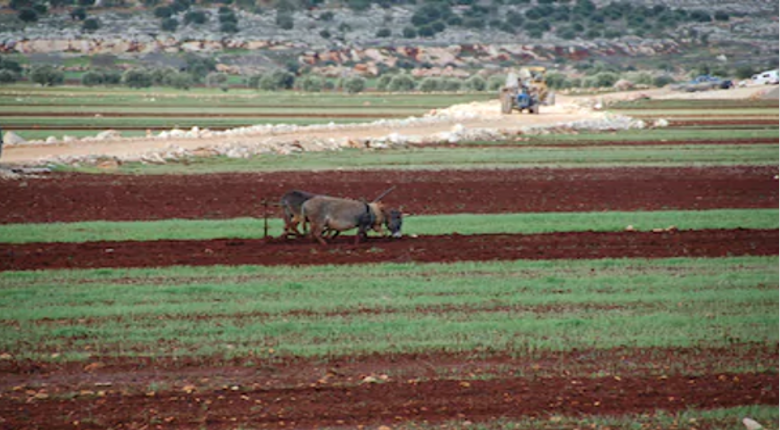

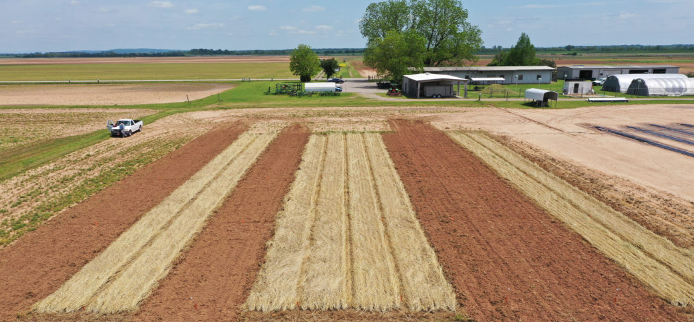

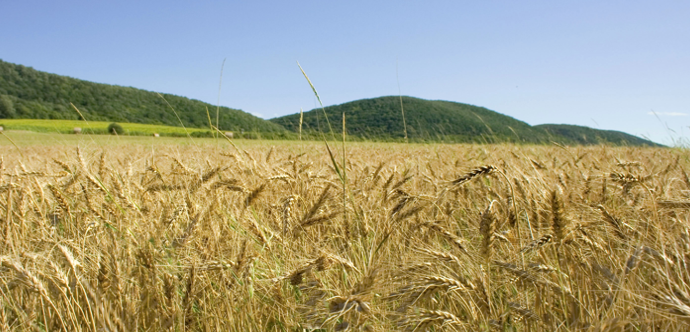





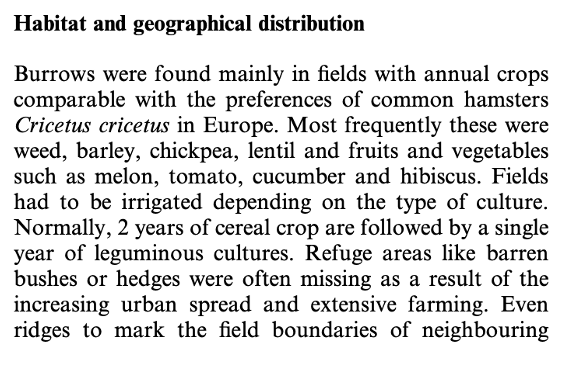
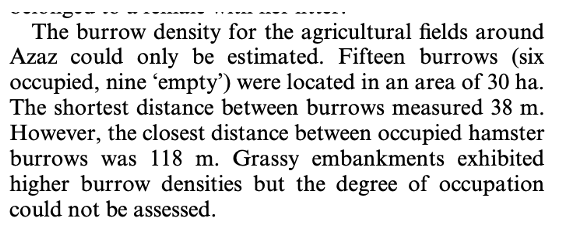
Comments